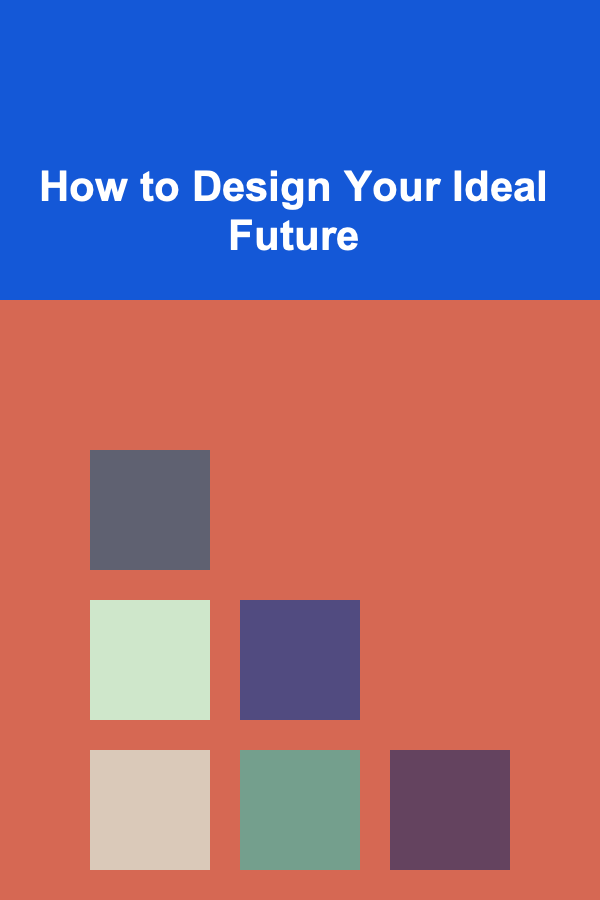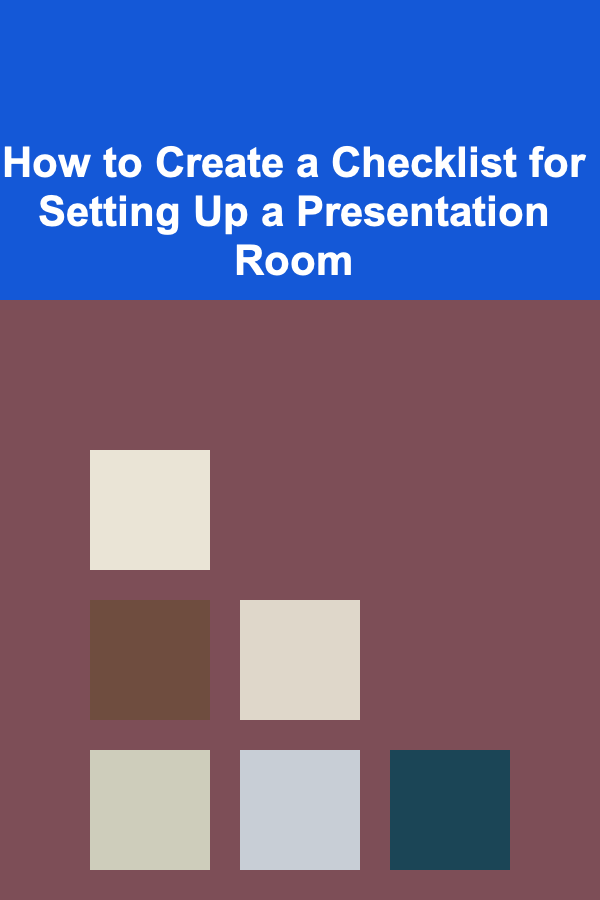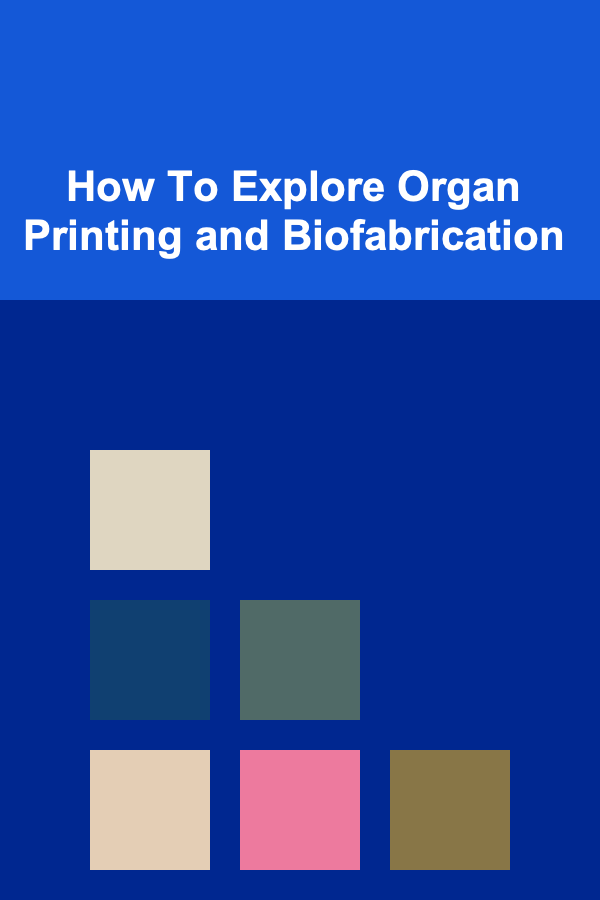
How to Design Your Ideal Future
ebook include PDF & Audio bundle (Micro Guide)
$12.99$11.99
Limited Time Offer! Order within the next:

Designing your ideal future is a deeply personal and transformative journey. It involves envisioning where you want to go, understanding who you want to become, and creating a roadmap to take you from your present reality to your future aspirations. This process requires clarity, intention, and strategic planning, as well as a willingness to adapt to challenges and change. In this article, we'll explore how you can begin designing your ideal future by breaking down key aspects of personal growth, goal setting, mindset transformation, and practical planning.
Understanding the Power of Vision
The Importance of Vision
A vision is a mental picture of what you want your future to look like. It serves as the foundation for all your goals, decisions, and actions. Having a clear vision of your ideal future gives you direction, motivation, and the sense of purpose needed to navigate through life's uncertainties.
In the words of Tony Robbins, "Setting goals is the first step in turning the invisible into the visible." To design your ideal future, you need to identify not only what you want but why you want it. This why anchors your vision, giving it emotional power and providing the fuel for overcoming obstacles along the way.
Creating a Compelling Vision for Your Future
The process of creating your ideal future begins with identifying the core elements of your life that matter most. These could include:
- Career and professional life: What does success look like for you in your career? Do you aspire to start your own business, rise to a leadership role, or make a meaningful contribution in your field?
- Relationships: What kinds of relationships do you want to nurture? This could include family, romantic partnerships, friendships, or professional relationships. How do you want to be known by others?
- Personal growth and self-actualization: How do you want to grow as a person? This may involve cultivating new skills, gaining wisdom, or achieving a higher sense of well-being.
- Health and wellness: How do you want to feel physically and emotionally? What habits will support a life of vitality and balance?
- Impact and legacy: What kind of impact do you want to leave on the world? How do you want to be remembered after you're gone?
To create a compelling vision, take time to reflect deeply on each of these aspects. Use visual tools like vision boards, journal writing, or mind mapping to clarify your ideas. Focus on the emotions that come with your vision---these emotions will be what keep you motivated and driven when things get tough.
Goal Setting: From Vision to Reality
SMART Goals
Once you have a clear vision for your future, the next step is to break it down into actionable goals. One popular framework for setting effective goals is the SMART criteria. SMART stands for:
- Specific: Clearly define your goal. What exactly do you want to achieve?
- Measurable: How will you measure progress? This ensures you can track your success.
- Achievable: Is the goal realistic given your current resources and constraints?
- Relevant: Is the goal aligned with your long-term vision and values?
- Time-bound: Set a clear timeline for achieving the goal.
For example, let's say one of your long-term goals is to "become a successful entrepreneur." A SMART goal related to this might look like, "Launch a successful online business within the next 12 months, generating at least $100,000 in revenue."
The Power of Micro-Goals
One of the biggest mistakes people make when designing their ideal future is setting only large, far-reaching goals without breaking them down into smaller, actionable steps. Large goals can seem overwhelming, and without smaller tasks to focus on, it's easy to get stuck.
Micro-goals are small, manageable tasks that move you forward incrementally toward your larger goal. By breaking down your main goals into smaller, bite-sized actions, you create clear milestones that help build momentum.
For example, if your goal is to write a book in one year, you might break it down into:
- Month 1: Outline the book's structure and chapters.
- Month 2: Write the first draft of Chapter 1.
- Month 3: Complete Chapter 2, and so on.
By focusing on one micro-goal at a time, you avoid feeling overwhelmed and stay consistently motivated.
Long-Term vs. Short-Term Goals
While long-term goals provide vision and direction, short-term goals are the actionable steps that you can take right now. Balancing both is critical. Long-term goals give you a sense of purpose, while short-term goals keep you grounded in the present and allow for immediate progress.
For example, if your long-term goal is to achieve financial independence by the age of 40, your short-term goals could include:
- Saving 20% of your income each month.
- Reducing non-essential expenses.
- Investing in low-risk assets to generate passive income.
By breaking your long-term goals into short-term actions, you create a manageable path toward realizing your ideal future.
Developing a Growth Mindset
The Role of Mindset
Mindset plays a crucial role in designing your ideal future. A growth mindset---the belief that abilities and intelligence can be developed through effort, learning, and persistence---is essential for overcoming challenges and continuously improving.
Carol Dweck, a psychologist at Stanford University, coined the term "growth mindset" and explained that individuals with this mindset are more likely to achieve their goals because they embrace challenges, learn from failure, and persist in the face of obstacles.
In contrast, a fixed mindset---the belief that abilities are innate and unchangeable---can limit your potential. Those with a fixed mindset may avoid challenges or give up easily when faced with setbacks, ultimately hindering their ability to design their ideal future.
Overcoming Limiting Beliefs
One of the key components of adopting a growth mindset is overcoming limiting beliefs. These are the thoughts or assumptions that hold you back from achieving your potential. Common limiting beliefs include:
- "I'm not good enough."
- "I don't deserve success."
- "It's too late for me to change."
These beliefs can stem from past experiences, societal expectations, or negative self-talk. To overcome them, you must first identify and challenge them. Replace limiting beliefs with empowering affirmations, such as:
- "I am capable of achieving my goals."
- "I deserve success and happiness."
- "Every step I take brings me closer to my ideal future."
Reprogramming your mind to embrace possibilities rather than limitations will empower you to take proactive steps toward designing your future.
Embracing Failure as Feedback
Failure is an inevitable part of life. When designing your ideal future, it's crucial to understand that failure is not a reflection of your abilities or potential---it's simply feedback. Every failure offers valuable lessons that can propel you closer to your goals.
Rather than fearing failure, adopt an experimental mindset. Treat each setback as an opportunity to learn, grow, and adjust your approach. When you embrace failure in this way, you build resilience and gain the confidence to continue moving forward.
The Power of Habits and Discipline
Building Daily Habits for Success
Success is often the result of consistent, daily habits that support your long-term goals. Small actions performed regularly lead to significant changes over time. The key is to establish habits that align with your vision and goals.
Some productive habits to incorporate into your daily routine include:
- Morning rituals: Start your day with intention by practicing mindfulness, setting goals for the day, and engaging in activities that support your physical and mental well-being.
- Time management: Use tools like calendars and task management apps to structure your day and prioritize important tasks.
- Exercise and self-care: Regular physical activity and self-care practices help maintain the energy and focus needed to pursue your goals.
- Continuous learning: Dedicate time to learning new skills, reading books, or taking courses that contribute to your personal growth.
These habits, compounded over time, will enable you to stay on track and gradually build the future you desire.
Overcoming Procrastination
Procrastination is a major roadblock to achieving your goals. It often arises from fear, perfectionism, or lack of clarity. To combat procrastination, consider the following strategies:
- Start with the smallest task: Often, the hardest part is getting started. Break down your tasks into the smallest, most manageable parts to reduce overwhelm.
- Set deadlines and accountability measures: Create a sense of urgency by setting deadlines and sharing your goals with others who can hold you accountable.
- Visualize success: When you imagine the rewards of completing a task, you increase motivation and make the process more enjoyable.
The more you combat procrastination, the more productive and confident you will become, moving you closer to your ideal future.
Staying Adaptable and Embracing Change
The Role of Flexibility
Designing your ideal future isn't a linear journey. Life is full of unexpected twists and turns, and the ability to adapt to new circumstances is vital. Flexibility allows you to adjust your plans when necessary without losing sight of your ultimate vision.
Staying open to new opportunities and being willing to reassess your goals periodically will keep your path aligned with your evolving values and desires.
Learning to Let Go
Finally, to design your ideal future, you must learn to let go of things that no longer serve you. This could include:
- Toxic relationships: Surround yourself with people who support and uplift you. Let go of relationships that drain your energy or hinder your growth.
- Unnecessary possessions: Declutter your environment to create space for new opportunities and experiences.
- Negative emotions: Practice mindfulness and emotional release techniques to move past past hurts and traumas.
By letting go of what doesn't contribute to your future, you free yourself to embrace the opportunities and experiences that will help shape the life you desire.
Conclusion
Designing your ideal future is a powerful, ongoing process that requires vision, intention, and action. By setting clear goals, cultivating a growth mindset, building positive habits, and staying adaptable, you can transform your aspirations into reality. The journey may be challenging, but with persistence, resilience, and a focus on continual learning and growth, you can create the life you've always dreamed of.
Remember: Your ideal future is not a destination but a journey---one that unfolds with each decision, each step, and each new day. So, begin today, and design a future that excites and empowers you.

How to Create a Checklist for Setting Up a Presentation Room
Read More
How to Manage Time Effectively with Organizational Tools
Read More
How to Organize Your Hot Glue Gun and Accessories
Read More
Make Money from Deep Learning with Automated AI Solutions
Read More
How To Explore Organ Printing and Biofabrication
Read More
10 Tips for Recovering Quickly After Anesthesia
Read MoreOther Products

How to Create a Checklist for Setting Up a Presentation Room
Read More
How to Manage Time Effectively with Organizational Tools
Read More
How to Organize Your Hot Glue Gun and Accessories
Read More
Make Money from Deep Learning with Automated AI Solutions
Read More
How To Explore Organ Printing and Biofabrication
Read More